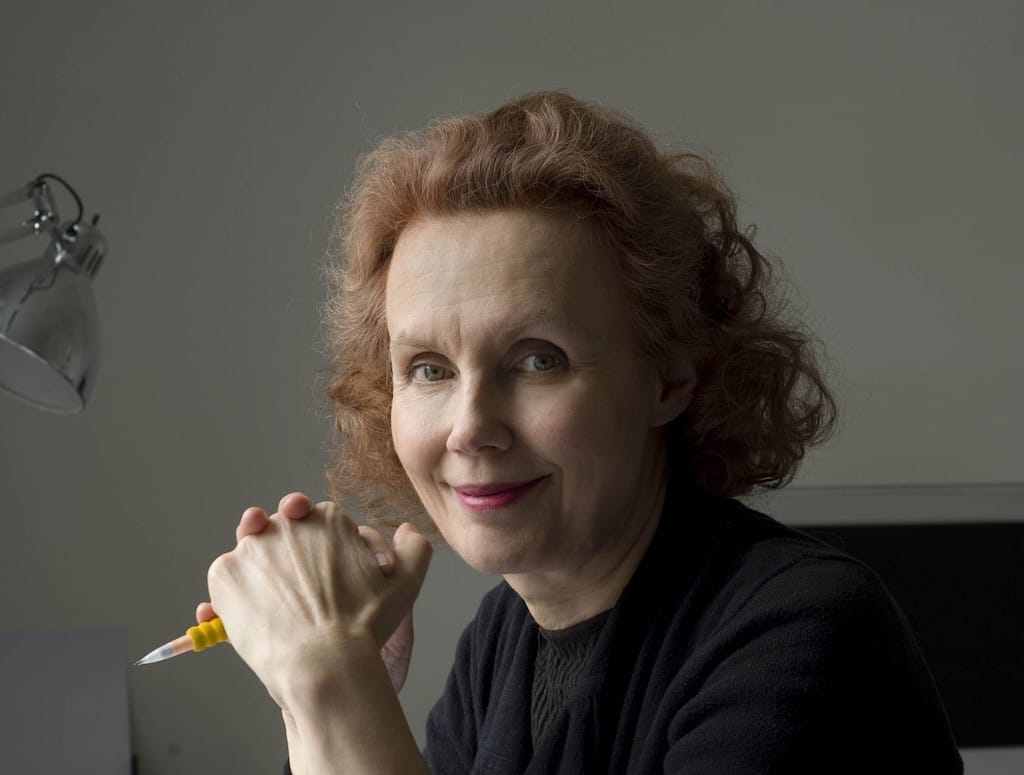Remembering the Legacy of Kaija Saariaho: A Trailblazing Composer of Love, Loss, and Spiritual Dimensions

The Finnish composer Kaija Saariaho passed away on 2 June, 2023, at the age of 70.
There’s been an outpouring of grief, sadness and love on social media and in statements from orchestras, festivals and opera companies as the music community processes the loss of one of the greatest composers of our time.
When I was a young composer, the first work by Saariaho I heard live was Jardin Secret I (1985) at the 1988 Hong Kong ISCM Festival.
It was the first time the International Society of Contemporary Music had staged a festival in an Asian country, and many European composers were in attendance.
I was swept up by the work with its haunting bell tones transformed through electronics. The music sounded simultaneously familiar and alien, intimate and immense. I was awed by the imposing presence of a composer I knew only from music history texts.
Later, we met when I served on some competition juries she chaired.
I briefly got to know someone of warm generosity, incisive knowledge and integrity who brought a hilariously dry wit and impeccable timing to telling stories.
Operas of love and loss of innocence
Saariaho will be remembered for her many illustrious achievements in forging a luminous musical language out of instrumental and electronic resources, the composition of five major operas, and through numerous orchestral works often showcasing close collaborators as soloists.
Her career reached its peak with two operas.
L’amour de loin (Love from afar) created a sensation when it premiered at the Salzburg Festival in 2000 in a production by American director Peter Sellars.
In a lyrical retelling of an enigmatic story of love and spiritual yearning, with a libretto by Lebanese-French writer Amin Maalouf, it has become one of the most successful 21st century operas.
Hypnotic, suspended harmonies and modal melodies create an alternative, idealised world in which one has time to contemplate themes of obsession, devotion and the realities and illusions of love.
In 2016, it was the first opera by a female composer to be staged at the Metropolitan Opera in New York since the production of Ethel Smyth’s Der Wald (The Forest) in 1903.
Two decades later, Saariaho’s last opera Innocence (2018) was described by the New Yorker as a “monumental cry against gun violence”. Again, it was immediately hailed as a masterpiece at its premiere at the 2021 Aix-en-Provence Festival in France.
Innocence is set in nine languages with a multitude of intersecting stories, but its genius lies in the way the luminously pulsing music is used to maintain dramatic momentum and a clear through line.
Following its premiere, Innocence has been taken up by major opera houses around the world.
A trailblazer for composers
Since the mid-80s, a time when there were very few prominent women composers on the international stage, Saariaho has been a major role model.
She resented the “woman composer” label and spoke infrequently about the prejudices and challenges she had encountered in the decidedly male-dominated world of classical music.
Yet on the occasions when Saariaho did address this topic, she conceded there was a role she could play in raising consciousness about the persistence of gender inequality in music.
In an interview for NPR in 2016 she said:
I’ve seen it with young women who are battling with the same things I was battling […] 35 years ago. […] Maybe we, then, should speak about it, even if it seems so unbelievable. You know, half of humanity has something to say.
Saariaho opened pathways for many composers across different generations and practices. Her work alchemised several 20th century musical trends that had tended to inhabit separate “camps” into a unique and emotionally powerful style with broad appeal for both specialists and the general public.
Early on, she engaged with a modernist focus on a detailed chiselling of sounds working with techniques that extended the capacities of any virtuoso performer performing her work.
Working at IRCAM (the Institute for Research and Coordination in Acoustics/Music) in Paris in the 1980s, she created several genre-breaking works.
Lichtbogen (1985/86) for ensemble with live electronics used computer-aided analyses of sound to shape huge sweeping brushstrokes of sensuous sound.
She worked within the musical field of “spectralism”, where the analysis of the acoustic properties of sound is used as the basis of composition. This opened up new approaches to harmony in her music.
Orion (2002) for large orchestra is an example of how she could build up layer upon layer of sound where you hear individual colours in translucent detail within epic, billowing clouds of resonance.
Her operatic works from 2000 on brought a narrative directness, a ravishing beauty and devastating emotional punch that saw her work embraced by audiences around the world.
Soul listening
At the heart of her work was a kind of soul-listening and deep connection to nature.
In 2015, I had the privilege of going for a walk with Saariaho in a snowy landscape outside Hämeenlinna, Finland (the birthplace of Sibelius). As we walked, I got to hear the sounds of cracking ice and the whisper of birch trees through the lens of her delicate observations.
As quoted in The New York Times, she remarked to her biographer Pirkko Moisala:
The task of today’s artist is to nurture with spiritually rich art. […] To provide new spiritual dimensions. To express with greater richness, which does not always mean more complexity but with greater delicacy.
This article first appeared on The Conversation.





